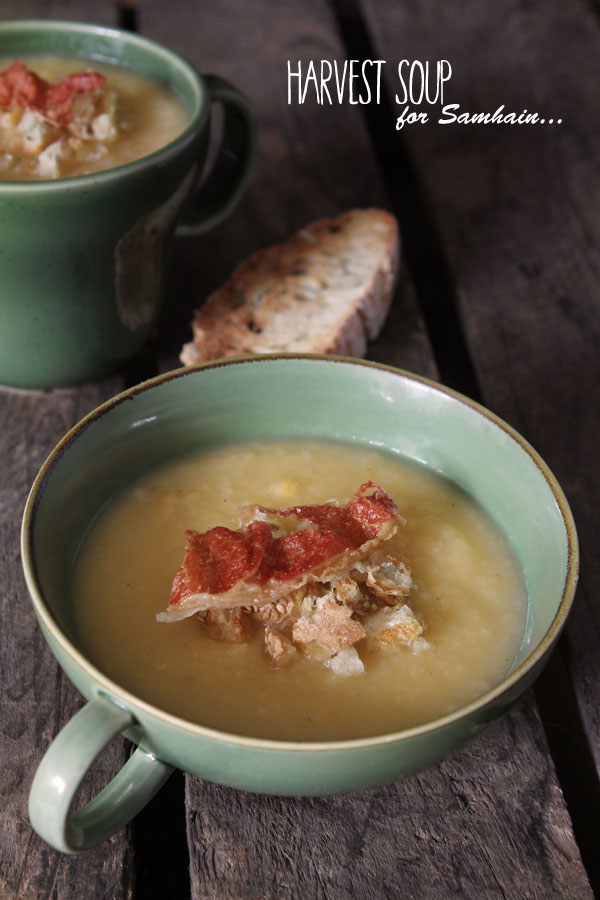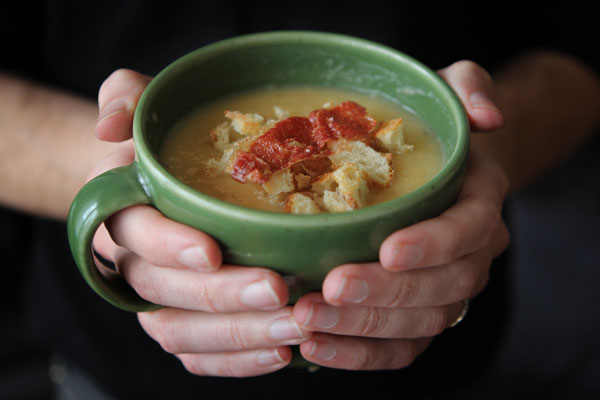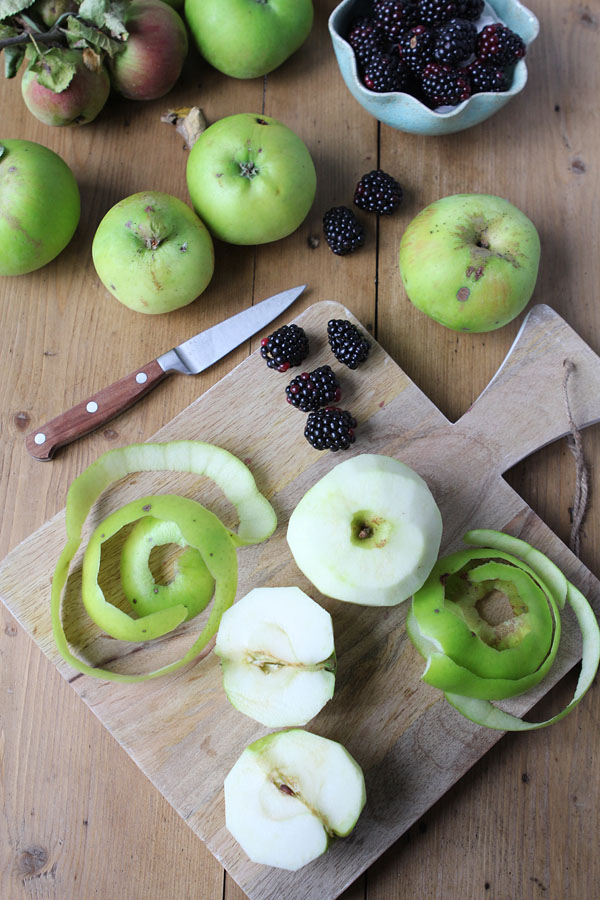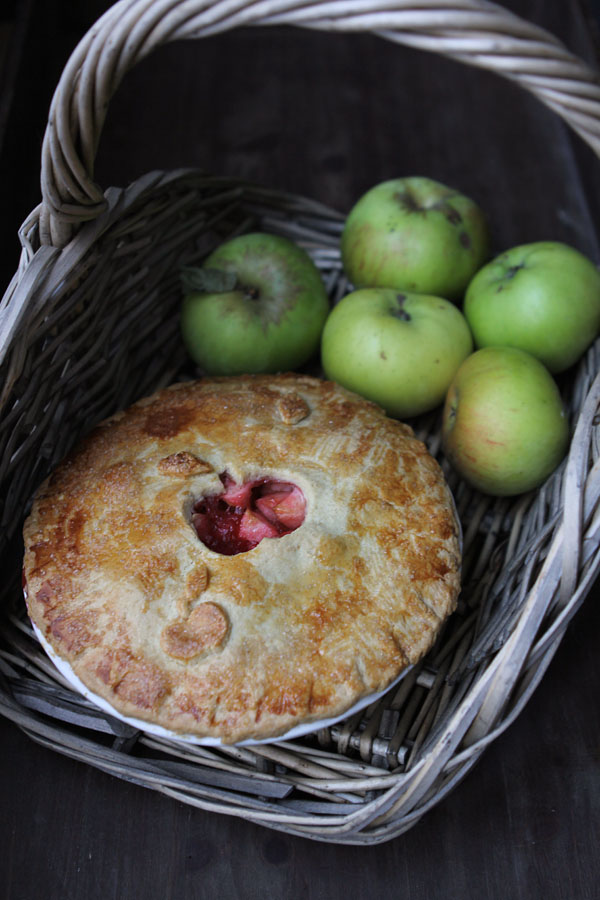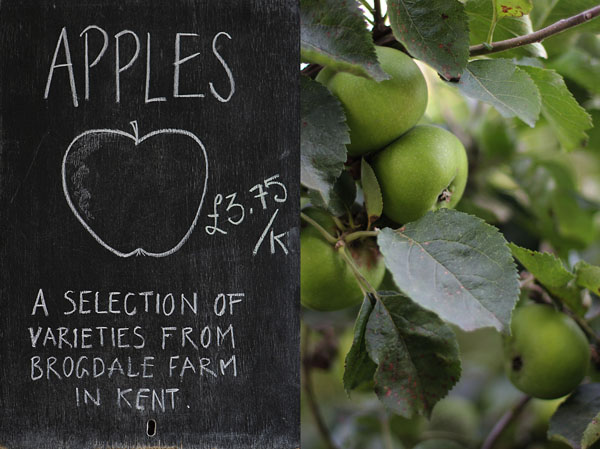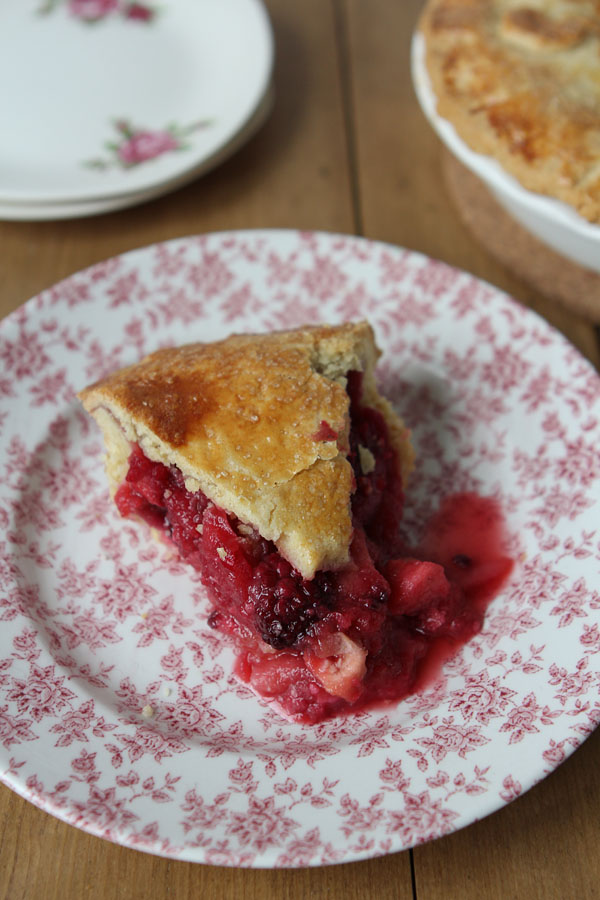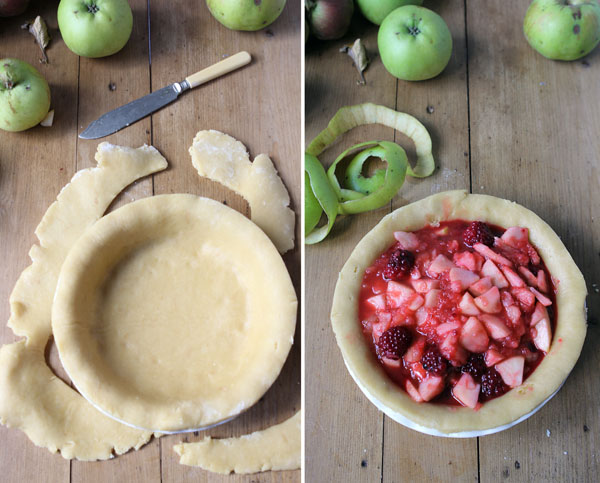The post Harvest soup for Samhain appeared first on Miss Foodwise.
]]>The Celts called it Samhain which celebrated the end of harvest
and the beginning of winter. It literally means ‘summer’s end’ and is the primary festival marking the end and the beginning of the year.
Along with Imbolc, Beltane and Lughnasadh it makes up the four Gaelic seasonal festivals.
Samhain was the evening when the veil between our world and
‘Netherworld’ was believed to be at their thinnest. It’s the feast of the dead, like Beltane is the feast of the living.
Bonfires played a big part in the festivities -much like with Beltane- people would jump over the fires or walk between them as a cleansing ritual.
Costumes and masks -usually animal heads and hides- were worn, as an attempt to cast of or taunt the evil spirits, this was referred to as ‘guising’.
It was also the time for farmers to choose which animals would need to be
slaughtered to get through the winter. This custom is still
observed now by many who raise livestock as the animals will no longer graze outside.
Food offerings were also made at Samhain, people would leave vegetables outside of their door to please the evil spirits and fairies. Later in time the food offerings changed into lanterns made of hollowed turnips – much resembling the carved pumpkins we know today.
The earliest record we have
of Samhain in the Celtic world comes from the Coligny Calendar,
a Celtic lunisolar calendar engraved on bronze tablets believed to be dating back to the first century AD. It was written in Gaulish, a Celtic language very close related to the Brythonic being Cornish, Welsh, Breton, Cumbric and maybe even Pictish.
Celtic
mythology is originally a spoken tradition, the irony is that the
traditions and tales were eventually written down by Christian monks in
the Middle Ages who then Christianized them to suit there needs and
believes. After all the best way to strip the people of their believes
is to simply adopt them to later on adapt them…
In my childhood there was no halloween, we had ‘All saints day’ and ‘All souls day’, we went to clean the gravestones of those who had passed and leave flowers for them…
But I was lucky because my mum had always been interested in Celtic mythology and she taught me about Samhain and all the other traditions when growing up.
So in a way, I grew up with Celtic traditions. On our travels to Britain we were always in search for Celtic and pre-celtic heritage while my mum told us tales about it in the car.
I feel fortunate to have been exposed to different traditions and religions as a child, I think it makes me a more liberal-minded person. It also makes me wonder how people can follow their religion and tradition blindly and without asking questions… but that is another story…
On to the soup!
I call this my harvest soup, it contains turnips, apples potatoes and a good homemade stock.
What do you need
butter
4 turnips (I used butter or yellow turnips)
1 bramley apple (or 1 cox)
1 large potato
1 liter of chicken or vegetable stock.
to decorate
toast ham or bacon for 1 minute in the microwave between a sheet of greaseproof paper
toast stale bread and cut into chunks
Method
Dice all the vegetables and apple.
Over a high fire heat two teaspoons of butter in a medium sized pan.
Add all the vegetables and apple and stir so they don’t burn
When slightly glazed add the stock and simmer for 30 minutes
Mix the soup until all the chunks are gone
Put back on the fire and bring to the boil for another minute
Season to taste with pepper and salt
Serve with the toasted bread and crispy ham or bacon
Enjoy and remember to set an extra plate for the spirits…
The post Harvest soup for Samhain appeared first on Miss Foodwise.
]]>The post Bramley apple and Blackberry pie appeared first on Miss Foodwise.
]]>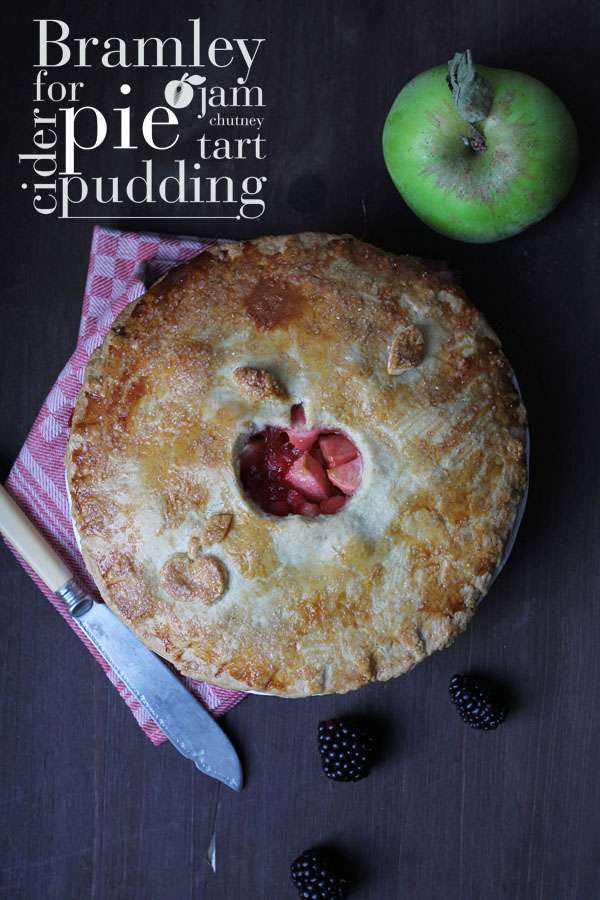
In 1809 a young girl, Mary Ann Brailsford, planted a few pips in her garden in Southwell. Those pips grew into the apple tree that is responsible for one of Britains most beloved fruit.
Forty years later a local butcher bought Mary Ann’s cottage and garden, after a decade of enjoying the trees fruits a nurseryman from the area asked him if he could sell some of the apples from the tree in his garden. The butcher agreed but wanted the apples to bear his name… Bramley.
Bramley’s seedling were an important source of food during the First World War as during the 1900s the trees were extensively planted and the crop plenty.
Every single Bramley apple tree has come from the tree planted in that cottage garden in Nottinghamshire.
The tree was almost lost forever when in 1900 a destructive storm knocked it over, leaving it wounded on the grounds of the garden where he had grown and grown for nearly a hundred years. But from the old wood of the tree emerged a new one and it grew to be the monument we can see today.
The Bramley apple tree in Southwell has become the towns treasure and they host many celebrations of the Bramley Apple, there even is ‘The Bramley apple Inn’ which is located just a few doors away from where the original Bramley apple tree still grows his apples to this day.
The lady who lives in the cottage now, acquired the house from Mr Bramley 50 years ago and has cared for the tree ever since.
Do you want to know more?
Why not pay a visit to Brogdale farm in Kent, home to the ‘National fruit collection’.
They
host an Apple festival and a Cider festival every year. If you have an
apple tree in your garden and you think this might be a very old
variety, you can send in a sample and they will investigate the fruit.
www.brogdalecollections.co.uk
Bramley apple and Blackberry pie
Sweet Shortcrust pastry
What do you need:
500 g plain flour
100 g icing sugar
250 g cold butter cut into small cubes
half a teaspoon vanilla extract
2 large free-range eggs
1 teaspoon milk
- Sieve the flour and icing sugar on to a work surface or into a large bowl.
- Throw the cubes of butter into the flour and using a knife start cutting them into even smaller pieces mixing it with the flour and sugar. This is a trick I use to keep the butter as cold as possible, if you touch the butter it melts quicker.
- To create good Shortcrust pastry your butter should be kept cold and your dough shouldn’t be over worked as this will activate the gluten.
- When you have a crumbly texture start using your hands to rub the butter into the flour until the mixture resembles bread crumbs.
- At this point ad the vanilla
- Ad the eggs one by one, and the milk, using a knife or fork to work it together.
- When the mixture is crumbly again use your hands to work the mixture until you have a ball of dough.
- Remember don’t work the pastry too much as it will leave you with a whole other texture.
- Wrap the dough in clingfilm and chill for at least 30 minutes.
Preheat your oven to 180° gas
Prepare the filling while the pastry is chilling
What do you need:
5 Brambley apples, cored, peeled and cut into halved wedges
100 g Blackberries
50 g butter
80 g light brown sugar
1 egg beaten
a sprinkle of caster sugar
20 cm shallow pie dish
- Put the butter into a saucepan and melt over a low fire
- Ad the sugar
- Ad the apples and slowly cook for 10 minutes
- Ad the blackberries and stir briefly and some of the berries release their juice
- Let it cool slightly
- Tip the fruit into a sieve and keep the juices and fruit aside
- Take your pasty out of the fridge
- Cut the dough in half and put the second piece back into the fridge
- Roll out the dough until it’s about 5 mm thick
- Butter your pie dish
- Line the pie dish with the pastry
- Trim off the excess pastry around the sides with a sharp knife
- Put the fruit into the lined pie dish so you have a little mount in the middle
- Use a spoon to add a bit of the juice, not all of it or it will get too wet.
- Take the rest of the pastry out of the fridge and roll it out like you did before
- Lay the pastry over the pie
- Trim off the excess pastry around the sides and crimp the edges of the pastry together with the back of a fork or your fingers.
- Decorate your pie if you like, cut an opening in the pastry so the steam can escape
- Brush the pastry with the beaten egg and sprinkle over some caster or cane sugar
* if you have leftover pastry why not make some shortbread!
Place the pie on the bottom of the preheated oven for 50 minutes to an hour.
The top should be golden and crisp.
Serve with a dollop of clotted cream or double cream.
Enjoy
You might also like
Blaeberry pie
Kentish Cobnut cake
The post Bramley apple and Blackberry pie appeared first on Miss Foodwise.
]]>